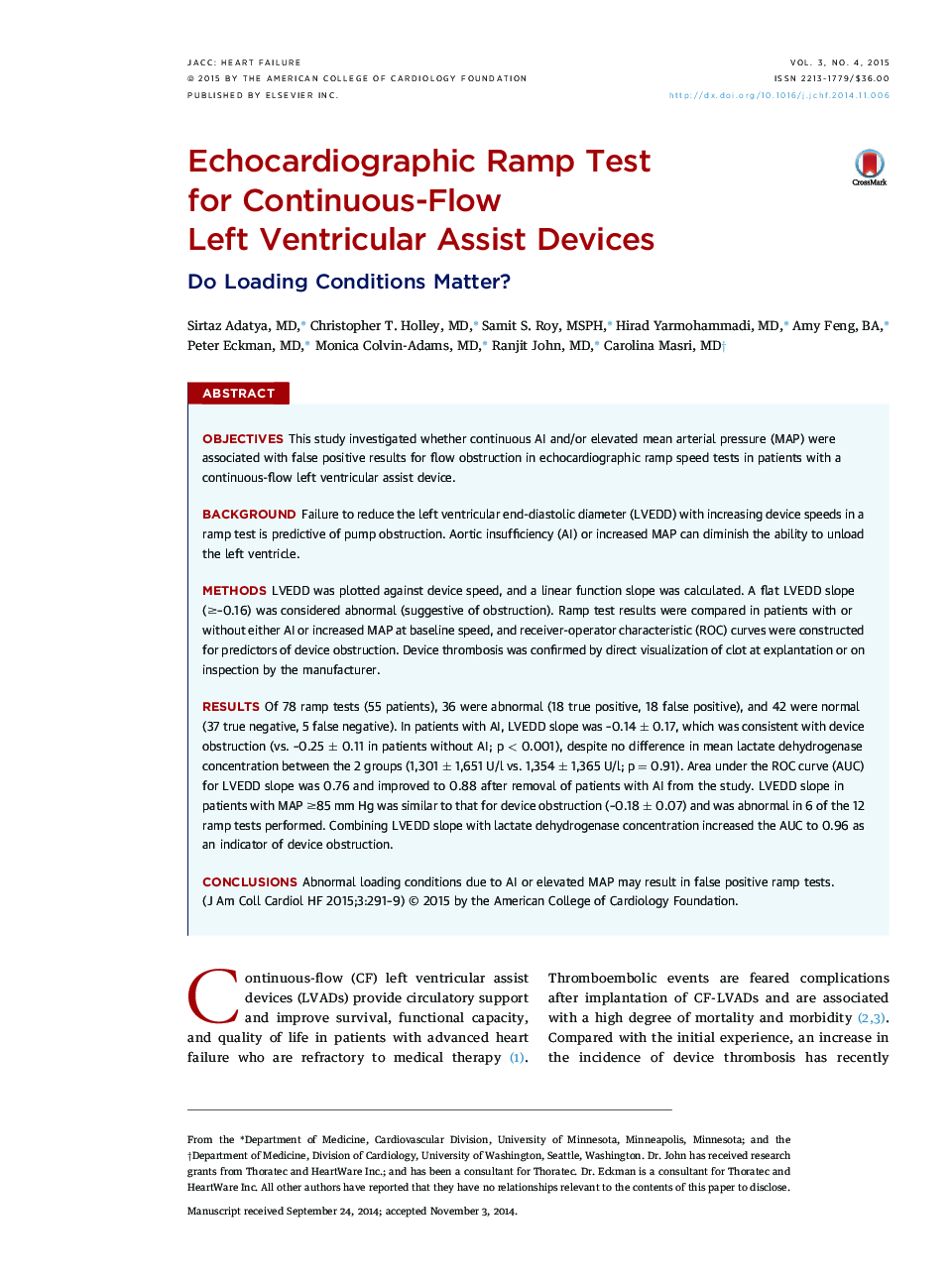| Article ID | Journal | Published Year | Pages | File Type |
|---|---|---|---|---|
| 2942352 | JACC: Heart Failure | 2015 | 9 Pages |
ObjectivesThis study investigated whether continuous AI and/or elevated mean arterial pressure (MAP) were associated with false positive results for flow obstruction in echocardiographic ramp speed tests in patients with a continuous-flow left ventricular assist device.BackgroundFailure to reduce the left ventricular end-diastolic diameter (LVEDD) with increasing device speeds in a ramp test is predictive of pump obstruction. Aortic insufficiency (AI) or increased MAP can diminish the ability to unload the left ventricle.MethodsLVEDD was plotted against device speed, and a linear function slope was calculated. A flat LVEDD slope (≥–0.16) was considered abnormal (suggestive of obstruction). Ramp test results were compared in patients with or without either AI or increased MAP at baseline speed, and receiver-operator characteristic (ROC) curves were constructed for predictors of device obstruction. Device thrombosis was confirmed by direct visualization of clot at explantation or on inspection by the manufacturer.ResultsOf 78 ramp tests (55 patients), 36 were abnormal (18 true positive, 18 false positive), and 42 were normal (37 true negative, 5 false negative). In patients with AI, LVEDD slope was –0.14 ± 0.17, which was consistent with device obstruction (vs. –0.25 ± 0.11 in patients without AI; p < 0.001), despite no difference in mean lactate dehydrogenase concentration between the 2 groups (1,301 ± 1,651 U/l vs. 1,354 ± 1,365 U/l; p = 0.91). Area under the ROC curve (AUC) for LVEDD slope was 0.76 and improved to 0.88 after removal of patients with AI from the study. LVEDD slope in patients with MAP ≥85 mm Hg was similar to that for device obstruction (–0.18 ± 0.07) and was abnormal in 6 of the 12 ramp tests performed. Combining LVEDD slope with lactate dehydrogenase concentration increased the AUC to 0.96 as an indicator of device obstruction.ConclusionsAbnormal loading conditions due to AI or elevated MAP may result in false positive ramp tests.
